Hyundai i20 vs Kia Picanto - Forskelle og priser i sammenligning
Når det handler om økonomi i hverdagen, viser de to modeller interessante forskelle.
Kia Picanto har en en smule prisfordel – den starter allerede ved 139900 dkr, mens Hyundai i20 koster 159100 dkr. Forskellen er omkring 19198 dkr.
Der ses også en forskel i brændstofforbrug: Hyundai i20 nøjes med 5.20 L og er dermed knap mærkbar mere økonomisk end Kia Picanto, der bruger 5.60 L. Forskellen er omkring 0.40 L pr. 100 km.
Effekt, drejningsmoment og acceleration siger meget om, hvordan en bil føles i hverdagen. Her ser man, hvem der leverer mest køreglæde.
Når det gælder motorkraft, har Hyundai i20 en mærkbar fordel – 100 HK mod 68 HK. Det svarer til en forskel på cirka 32 HK hk.
I acceleration fra 0 til 100 km/t er Hyundai i20 bemærkelsesværdig hurtigere – den klarer sprinten på 11.10 s, mens Kia Picanto bruger 14.60 s. Det er cirka 3.50 s hurtigere.
I tophastighed ligger Hyundai i20 noget foran – den når 183 km/h, mens Kia Picanto topper ved 162 km/h. Forskellen er cirka 21 km/h.
Der er også forskel på drejningsmomentet: Hyundai i20 trækker betydelig kraftigere med 200 Nm mod 96 Nm. Forskellen er omkring 104 Nm.
Kabineplads, bagagerum og lasteevne er afgørende i daglig brug. Her tæller komfort og fleksibilitet mest.
Sæder: tilbyder flere siddepladser – mod .
Hvad angår egenvægt, er Hyundai i20 let lettere – 1088 kg mod 1124 kg. Forskellen er cirka 36 kg.
Når det kommer til bagagerumsplads, tilbyder Hyundai i20 bemærkelsesværdig mere – 352 L mod 255 L. Forskellen er omkring 97 L.
I maksimal lastekapacitet klarer Hyundai i20 sig noget bedre – op til 1165 L, cirka 155 L mere end Kia Picanto.
I lasteevne vinder Hyundai i20 bemærkelsesværdig – 472 kg mod 332 kg. Forskellen er omkring 140 kg.
Hvem løber med sejren?
Samlet set fremstår Hyundai i20 som giver modstanderen få chancer og sikrer sig dermed titlen som DriveDuel Champion.
Den imponerer med et mere afbalanceret helhedsindtryk og er den mest alsidige i hverdagen.
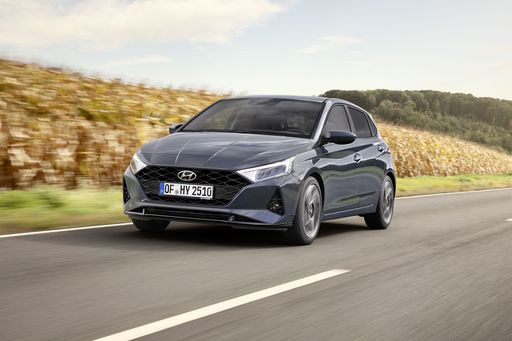 @ Hyundai Motor Company
@ Hyundai Motor Company
Hyundai i20
Omkostninger og forbrug
Se detaljeret analyse
Motor og ydeevne
Se detaljeret analyse
Dimensioner og karrosseri
Se detaljeret analyse
Hyundai i20
Hyundai i20 er en kvik og veludstyret lille hatchback, der leverer god værdi og en sikker, velfungerende hverdag på vejene. Den er praktisk i byen, overraskende komfortabel på længere ture og et sympatisk valg for dem, der vil have fornuft uden at gå på kompromis med stil.
Detaljer @ Hyundai Motor Company
@ Hyundai Motor Company
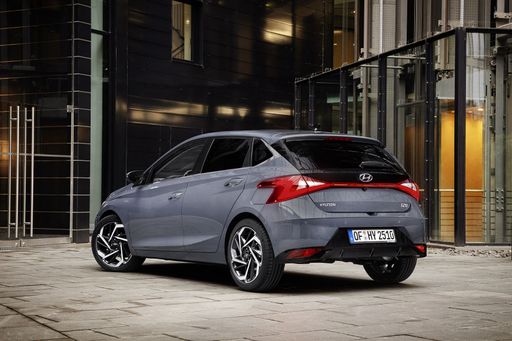 @ Hyundai Motor Company
@ Hyundai Motor Company
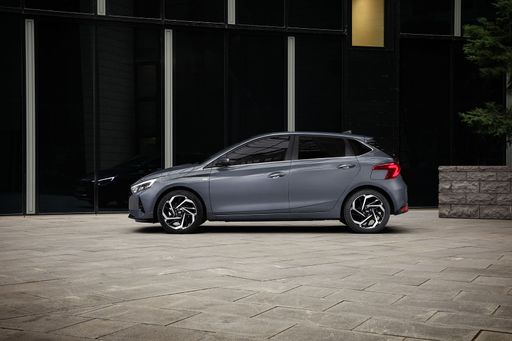 @ Hyundai Motor Company
@ Hyundai Motor Company
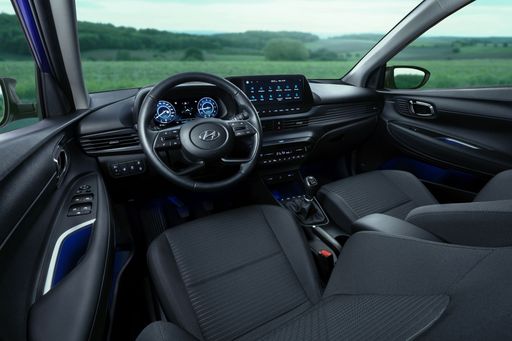 @ Hyundai Motor Company
@ Hyundai Motor Company
 @ Hyundai Motor Company
@ Hyundai Motor Company
Kia Picanto
Kia Picanto er en charmerende bybil, der klemmer masser af praktisk funktionalitet og personlighed ind i et kompakt format. Den er let at parkere og endnu lettere at elske, så den passer perfekt til dem, der vil have smart transport uden at gå på kompromis med stil.
Detaljer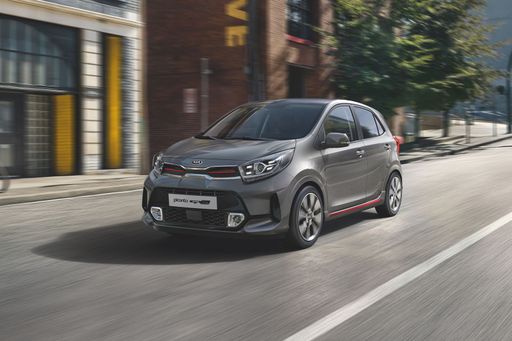 @ Kia Corporation
@ Kia Corporation
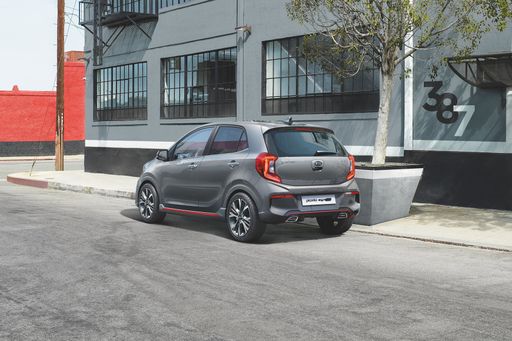 @ Kia Corporation
@ Kia Corporation
 @ Kia Corporation
@ Kia Corporation
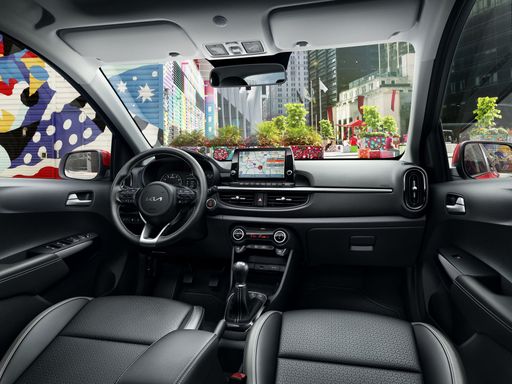 @ Kia Corporation
@ Kia Corporation
 @ Hyundai Motor Company
@ Hyundai Motor Company
|
 @ Kia Corporation
@ Kia Corporation
|
|
|
|
Omkostninger og forbrug |
|
|---|---|
|
Pris
159100 - 219400 dkr
|
Pris
139900 - 176700 dkr
|
|
Forbrug L/100km
5.2 - 5.3 L
|
Forbrug L/100km
5.6 - 5.9 L
|
|
Forbrug kWh/100km
-
|
Forbrug kWh/100km
-
|
|
Elektrisk rækkevidde
-
|
Elektrisk rækkevidde
-
|
|
Batterikapacitet
-
|
Batterikapacitet
-
|
|
co2
119 - 121 g/km
|
co2
127 - 135 g/km
|
|
Tankkapacitet
40 L
|
Tankkapacitet
35 L
|
Dimensioner og karrosseri |
|
|---|---|
|
Karrosseri
Hatchback
|
Karrosseri
Hatchback
|
|
Sæder
5
|
Sæder
4 - 5
|
|
Døre
5
|
Døre
5
|
|
Egenvægt
1088 - 1190 kg
|
Egenvægt
1124 - 1131 kg
|
|
Bagagerumskapacitet
352 L
|
Bagagerumskapacitet
255 L
|
|
Længde
4065 - 4075 mm
|
Længde
3605 mm
|
|
Bredde
1775 mm
|
Bredde
1595 mm
|
|
Højde
1450 - 1455 mm
|
Højde
1485 mm
|
|
Maksimal bagagerumskapacitet
1165 L
|
Maksimal bagagerumskapacitet
1010 L
|
|
Lastkapacitet
450 - 472 kg
|
Lastkapacitet
253 - 332 kg
|
Motor og ydeevne |
|
|---|---|
|
Motortype
Benzin
|
Motortype
Benzin
|
|
Transmission
Automatisk, Manuel
|
Transmission
Manuel, Automatisk
|
|
Transmissionsdetaljer
Automatisk dobbeltkobling, Manuel gearkasse
|
Transmissionsdetaljer
Manuel gearkasse, Automatiseret manuel
|
|
Drivtype
Forhjulstræk
|
Drivtype
Forhjulstræk
|
|
Effekt HK
79 - 100 HK
|
Effekt HK
68 HK
|
|
Acceleration 0-100 km/t
11.1 - 13.7 s
|
Acceleration 0-100 km/t
14.6 - 17.2 s
|
|
Maks. hastighed
166 - 183 km/h
|
Maks. hastighed
160 - 162 km/h
|
|
Moment
113 - 200 Nm
|
Moment
96 Nm
|
|
Antal cylindre
3 - 4
|
Antal cylindre
3
|
|
Effekt kW
58 - 74 kW
|
Effekt kW
50 kW
|
|
Motorstørrelse
998 - 1197 cm3
|
Motorstørrelse
998 cm3
|
Generelt |
|
|---|---|
|
Modelår
2024
|
Modelår
2025
|
|
CO2-effektivitetsklasse
D
|
CO2-effektivitetsklasse
D
|
|
Mærke
Hyundai
|
Mærke
Kia
|
Hvilke drivmuligheder tilbyder Hyundai i20?
Modellen tilbydes med Forhjulstræk.
De viste priser og data er estimater baseret på tyske listepriser og kan variere fra land til land. Disse oplysninger er ikke juridisk bindende.
